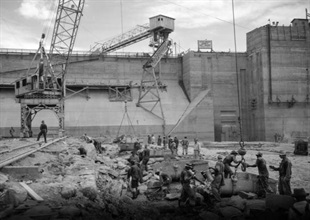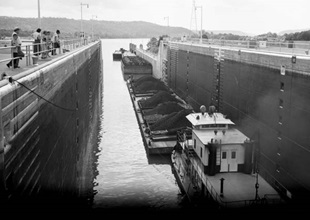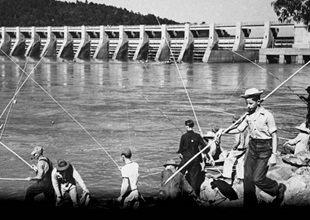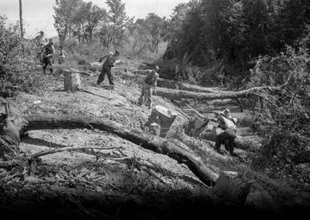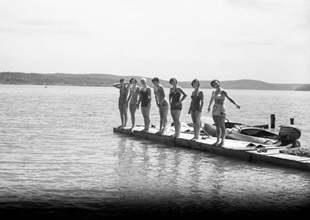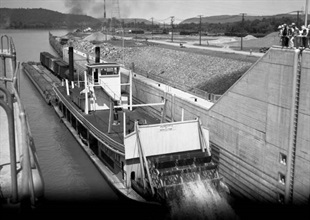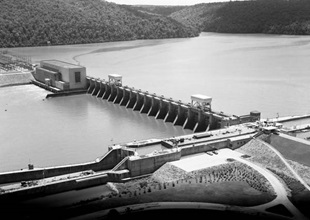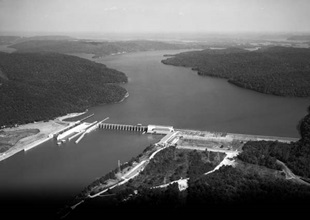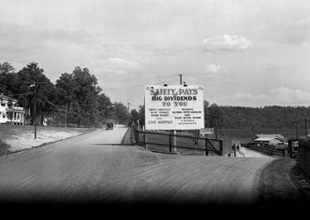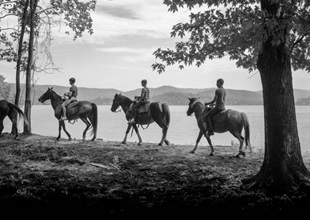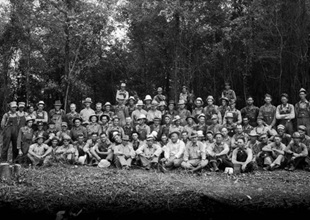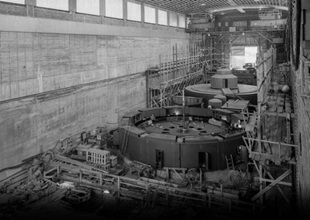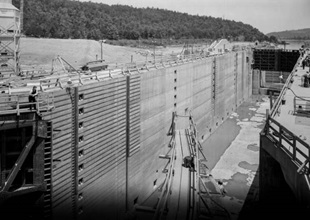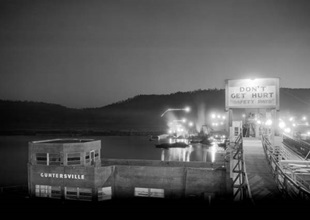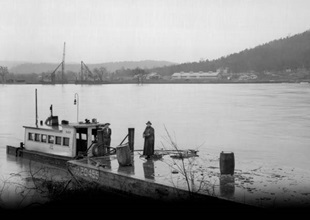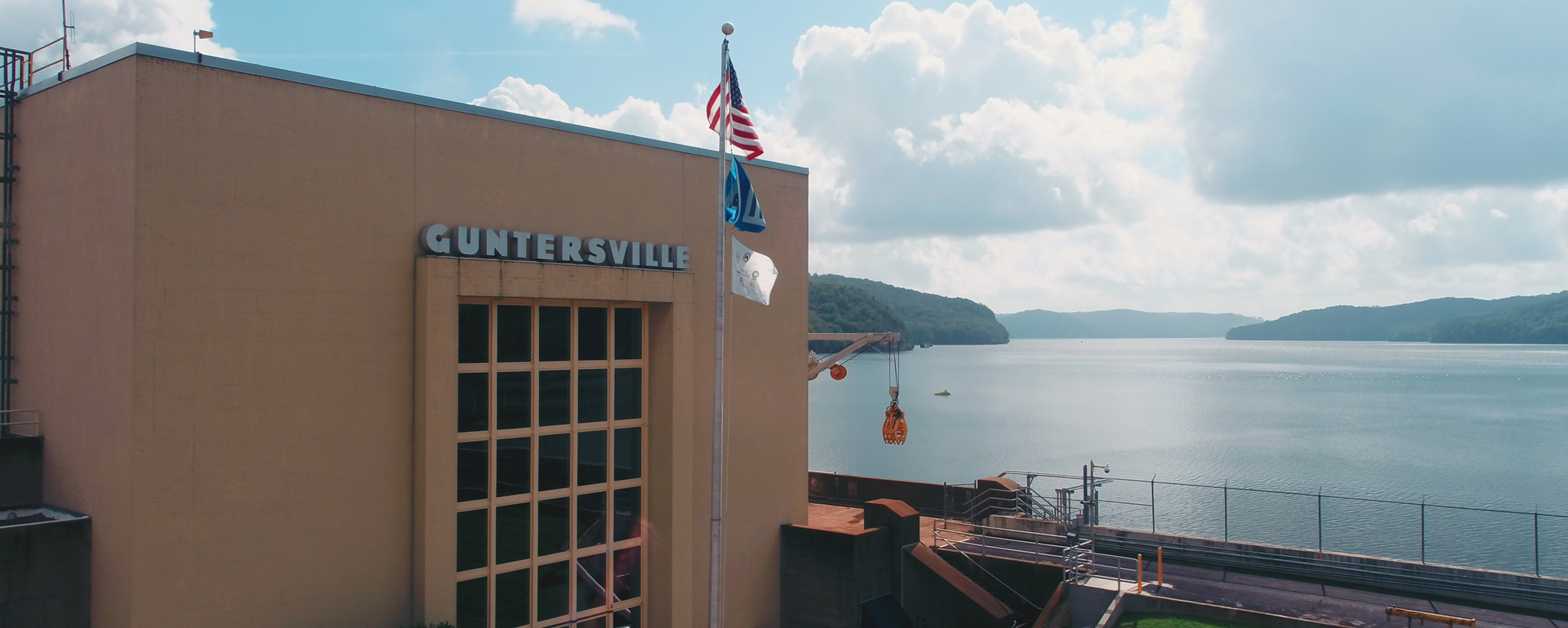
Take a Virtual Tour of Guntersville Dam!
It was the largest crowd ever to assemble in northern Alabama.
On a sweltering day in early August 1939—eighty years ago—the Birmingham (Ala.) News reported that “over 50,000 souls” lined the banks of the newly formed Guntersville Reservoir. They had come from miles around to observe the dedication of the new lake. Assembled on a barge at the Spring Creek dike were Guntersville Mayor E. H. Couch, Congressman Joe Starnes — representing Alabama’s Fifth Congressional District — and several other state and national officials. The politicians spoke about how this was “a great day for Alabamans . . . The cause of conservation as well as the cause of recreation is served by this newest and picturesque body of water.”
As if to emphasize these words, the dedication ceremonies included the first hydroplane races, known as the Dixie Motor Races. Over fifty entrants competed in six divisions for $500 in prize money, and the day went down in history as the “largest
crowd to ever assemble in north Alabama.”
It was on this day that the people of the area, especially those from the town of Guntersville, realized that the dam might be an asset after all.
Consternation at the start
The start of the dam had seen concern from many farm families in the region because the exact location of the dam had yet to be named. Many landowners were concerned that their best soil would be covered, and they were not sure what they would gain in return. In fact, a meeting was held in October 1935 at the county courthouse to alleviate anxiety. David Lilienthal, one of TVA’s three board members, addressed the crowd of farmers and businessmen. He told them of TVA’s plans to bring electricity to the mountains and valleys of rural northeast Alabama via the construction of Guntersville Dam. Lilienthal promised that with this project, development would come.
Lilienthal’s meeting with the locals did the trick. Less than a week later, the Marshall County, Ala., court voted full cooperation in the TVA project to bring rural electrification to that county. Lilienthal wrote in his journal that this trip was the first he’d had in a long time “of seeing and talking with the common folk that this whole project is really intended for. The enthusiasm about the rural electrification program that I noticed particularly while I was speaking to this crowd… was really amazing.” He went on to write that “there is somehow a magic about TVA kilowatts.”
On December 4, 1935, two months after Lilienthal spoke on the courthouse steps, construction began at Cole’s Bend, eleven miles below the town of Guntersville. This dam would be the fourth TVA hydro project; the third on the main stem of the Tennessee; the second dam physically located in Alabama.
A construction camp, consisting mainly of semi-permanent houses and dorms, was quickly erected for the men and handful of women that would work at the site. Most project laborers and tradesmen were selected from within a 60-mile radius of the dam site, and employment reached its peak in 1938 with approximately 3,500 men working on both construction of the dam and clearing of the reservoir area. By mid-January 1939, the gates were closed and the storage of water begun. The first of three generators was placed in service on August 1, 1939.
The Most Important Event in Marshall County, Alabama
Larry Smith, editor of the book Guntersville Remembered, called “the most important event in the history of Marshall County—the completion of Guntersville Dam.” Certainly, another completed hydro facility showed the progress TVA was making in the unified development plan of the Tennessee River system. The reservoir provided more storage for flood control; the lock added to the increasing navigation channel, and the dam supplied affordable electricity to the farmers of the region. Local historian and author Katherine Duncan recalled that at first, people thought the town of Guntersville was ruined because the economy was centered around farming, but noted that the “resentment gradually gave way to rejoicing as people began to see the potential that the lake held.”
The Birmingham News reported in November 6, 1939, that “Guntersville has huge industrial expansion.” The reporter quoted the Chamber of Commerce president, who stated that power rates in Guntersville were reduced about 30 percent with the coming of the dam, opening an entirely new field to town — the development of small industries. At the time of the article about a half-dozen new industries had been established, and the valuation of property had almost doubled.
The development potential that David Lilienthal promised the citizens of Guntersville that fall day in 1935 was realized. In fact, he wrote a fitting close to the story in his 1944 book, Democracy on the March. The words he penned then are still relevant today:
“Under the town’s own plan, the industrial uses of the waterfront are separated from the recreational uses, and this city, extending in a long peninsula into the broad blue waters of Guntersville Lake, is today one of the most attractive small cities in the whole South, with its population increased more than 50 percent. What at first seemed a calamity was turned into an opportunity, and a community sense of direction has resulted that continues to bear fruit.”We would like to thank the National Archives for sharing the Guntersville Construction Progress photos.
